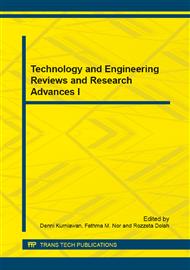p.294
p.299
p.304
p.311
p.319
p.326
p.331
p.339
p.344
Validation of CFD Modeling and Simulation of a Simplified Automotive Model
Abstract:
In the early design phase of automotive sector, the flow field around the vehicle is important in decision making on design changes. It would consume a lot of money and time for multiple prototypes development if adopt traditional testing method which is wind tunnel test. Thus, numerical method such as Computational Fluid Dynamics (CFD) simulation plays an important role here. It is very often simulation results been compared with wind tunnel data. However, with various mesh types, meshing methodology, discretization methods and different solver control options in CFD simulation, users may feel low confidence level with the generated simulation results. Thus, a robust modeling and simulation guideline which would help in accurate prediction should be developed due to the industry’s demand for accuracy when comparing CFD to wind tunnel results within short turnaround time. In this paper, a CFD modeling and simulation study was conducted on a simplified automotive model to validate with wind tunnel test results. The wind tunnel environment was reproduced in the simulation setup to include same boundary conditions. Meshing guidelines, turbulence model comparisons and also the best practice for solver setup with respect to accuracy will be presented. Overall, CFD modeling and simulation methods applied in this paper are able to validate the results from experiment accurately within small yaw ranges.
Info:
Periodical:
Pages:
319-325
Citation:
Online since:
February 2015
Authors:
Keywords:
Price:
Сopyright:
© 2015 Trans Tech Publications Ltd. All Rights Reserved
Share:
Citation:


